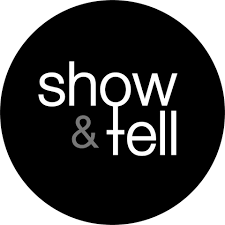Note that the Unit 1 assignment calls for you to choose a source from a scholarly or professional journal. As I’m reviewing your summaries, it’s clear that not all of you have done this. Read on if you’re not sure what I mean by “scholarly,” or if you’d just like a little refresher, and then see my next post (linked below) for some more pointers about crafting your draft.
Scholarly journals are different in some important respects from popular magazines, the kind that you see at the checkout line at the grocery store or on the display in a bookstore. You can see some of those differences just at a glance–
- non-flashy covers (really the opposite of flashy–like this: )

- few to no advertisements (and those that are present are typically announcements about various professional conferences and publications)
Those visual differences are just the tip of the iceberg. Here are some other critical differences between scholarly publications and popular magazines:
- authors published in scholarly journals are credentialed experts in their respective fields who typically specialize in certain topics–as opposed to professional journalists who might write about a range of topics that they haven’t spent years studying, maybe a different topic every week or every month
- articles in scholarly journals are aimed at a fairly narrow audience of other scholars/professionals in that field who will understand the often highly-specialized jargon they employ (and who can make sense of their various graphs, charts, formulae, etc.)–as opposed to popular magazines that aim for a broad readership to increase circulation/sales
- authors of scholarly articles must demonstrate the legitimacy and solidity of their research to their readers, and so you’ll see in-text citations for their detailed data and analysis–as opposed to popular publications that are not so focused on clarifying their research methods and giving readers access to all of their sources
- articles in scholarly journals have been peer-reviewed, read by a panel of other experts in the field who have endorsed their methodology as sound and their findings as important contributions to the field of study before agreeing that it should be published–as opposed to popular magazines where there is not such a rigorous process of critical review
Professional journals are a bit less stodgy in terms of their visual appearance and a bit less rigid in their review process, but are nonetheless going to feature work by practitioners who are experts in their field, as opposed to journalists who may be more free-range in their topics. And they will typically utilize a pretty research-heavy approach to share information with their readers, other practitioners in the field, who are intent on staying on top of the latest news and research. They may be a bit flashier in appearance than scholarly journals (more images, more reader-friendly formatting), but are still going to have very visible research in the form of footnotes or in-text citations/links and a references list.
You’ll find easy access (and some research assistance) on the SU library website.
Your focus for this Unit 1 canon addition needs to be on scholarly or professional literature. If that’s not what you had in your first draft, it’s not too late–please keep searching, contact Karen with questions, and re-submit a new summary by the end of the day on Wednesday. You can then take an extra day to assemble your draft, and submit that by the end of the day on Thursday. That way you can make a truly valuable contribution to our growing body of knowledge.
Please see this post for some more guidance on assembling your draft:


